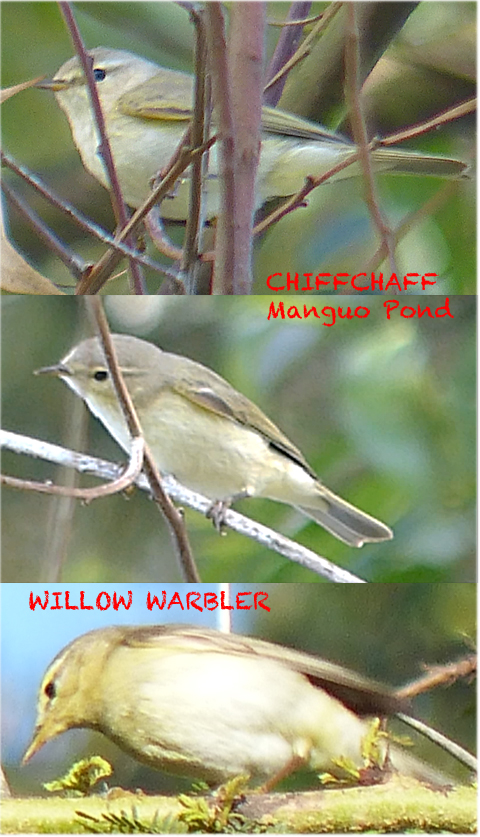From: Brian Finch <birdfinch@gmail.com>
Date: 2014-12-27 08:19
Subject: MANGUO POND 26th December 2014
Dear All,
I hope everyone had a good festive season.
MANGUO POND 26th December 2014.
Nigel Hunter and myself decided to see what effect the recent rains
had had on Manguo Pond at Limuru. There has been no word from there
lately, and it looked like the place might have recently dried up or
nearly so. The recent wet weather has given the place a mud-flat feel
rather than a pond, and there is a shallow covering of water,
testified by a man who waded to an island and even though he must have
been sinking into the mud, the water did no go higher than his knees.
There were lots of birds, but in the duck-line mainly Yellowbills and
Redbills. Additionally one female Maccoa, no White-backs at all, three
White-faced and one Fulvous, six Southern Pochard, and in the migrant
line one each of Pintail and Shoveler and two Garganey. Just three
Swamphens, and a poor variety in waders with many Ruff and Wood
Sandpipers, ten Little Stint, four Marsh, several Common but just one
Green Sandpiper. There were a few Yellow Wagtails, one Red-throated
and one Tree Pipit.
In the south-east corner you can drive off the road, and walk along
the east side of the pond along the shoreline. In the eucalypts and
native scrub along here there were many Willow Warblers calling their
“hooeet” call, but somewhere amongst them another bird was giving a
“hweet” as a single not double note. I asked Nigel if he would play
Chiffchaff on the App on his IPad, which he did, and we had a fairly
immediate reaction with the bird flying down into the bushes, and it
was a Chiffchaff (see images attached). It was of course of the pale
race abietinus, as were the recordings on the App which I had made at
Timboroa. Really there are a number of differences compared to a
Willow Warbler. The first text-book feature we are taught to look for
at a young age is the blackish as opposed to yellowish-brown legs. But
other than this there are the shorter and darker bill, that together
with the higher rounded rather than flat-crown create a dumpier
appearance. The supercilium is more obscure than Willow which has a
clean prominent sweeping line from base of bill back to well behind
eye. In the Chiffchaff the supercilium looks very faint in front of
the eye, and fades fast behind the eye. The pale lower eye-lid is more
obvious accentuating the dark eye. The head, face and back are all
brownish-olive lacking the yellow wash on face , throat and
supercilium of Willow. Because the bird overall lacks yellow and green
content in the plumage, the yellow at the bend of the wing and the
bright olive-green edges to the primaries look more contrasting than
in Willow, where the yellow abuts the pale yellow on the breast of
most, and the back and wings are more olive-green so the feather-edges
are not so prominent. The pallid race yakutensis of Willow, doesn’t
have brighter olive-green or yellow in the plumage, including the
edges of the primaries.
The bird might stay here, and if it’s a male, in a few weeks time
should start singing.
Other birds in this scrub were several Eastern DC Sunbirds, Lesser
Swamp Warblers who have no swamp vegetation left to inhabit, Cinnamon
Bracken Warbler, Hunter’s Cisticola and Dusky Flycatcher.
Best to all
Brian

